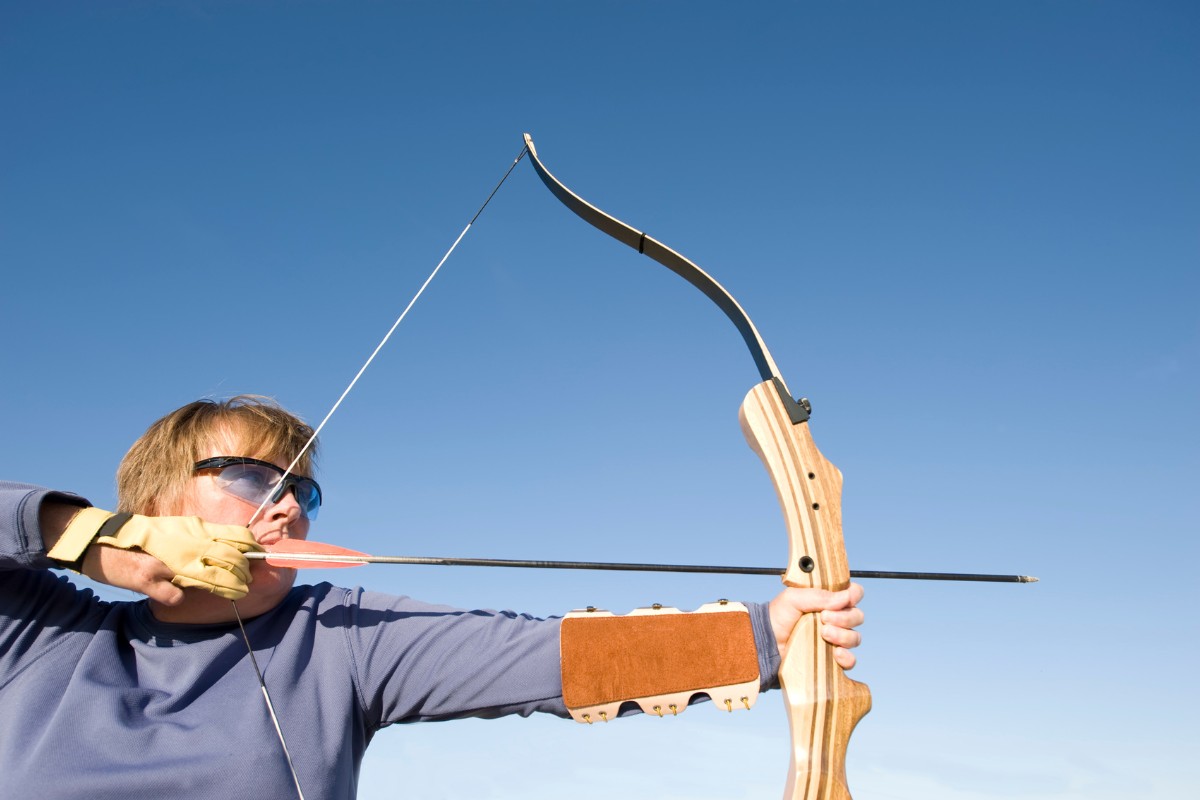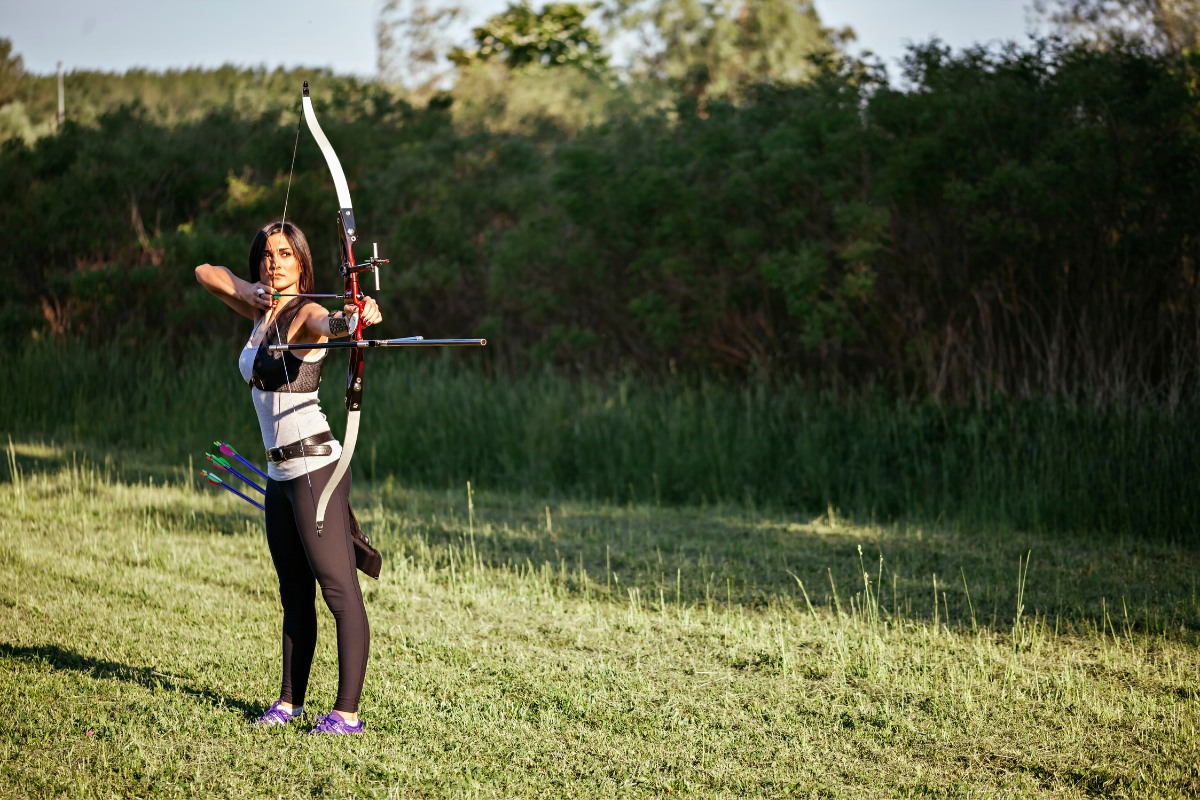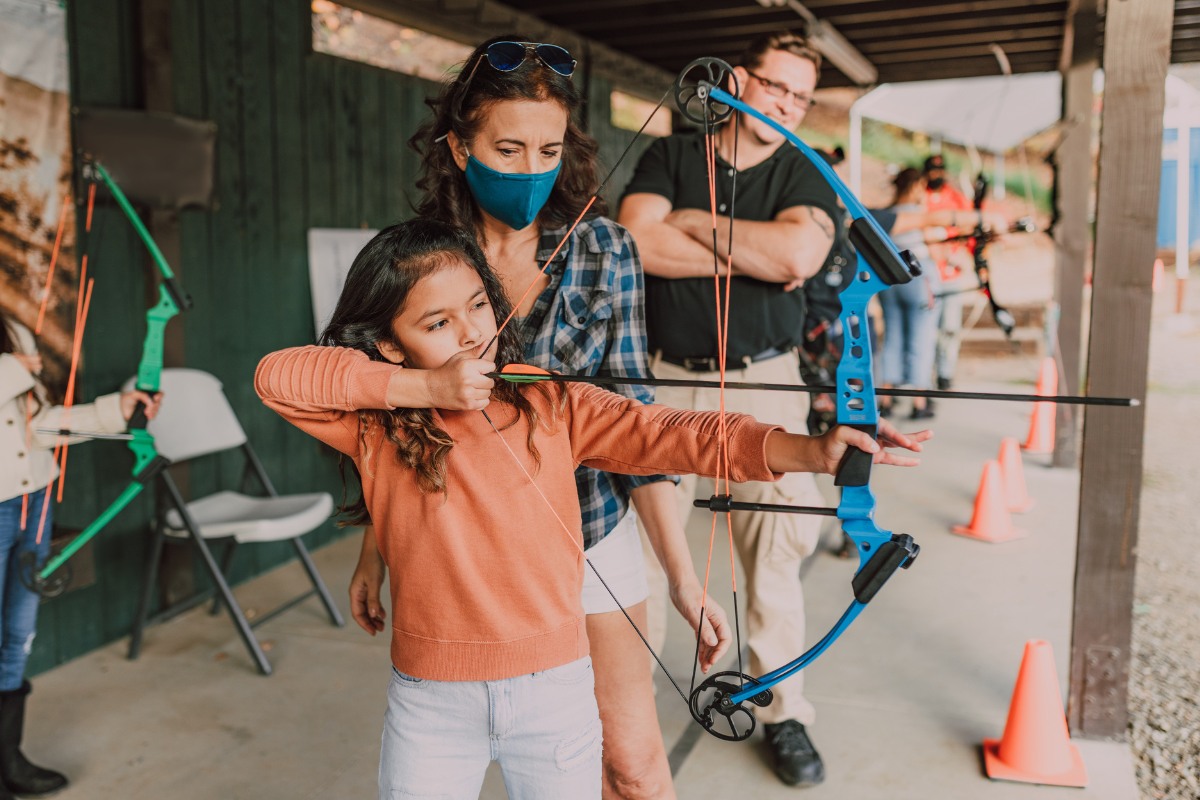Not much light has been shone on archery bow stacking, and as a result, most archers go through it without even knowing it. They train with it and build their form and stance around it until they change their bows and their accuracy goes haywire. This article presents to you everything about stacking: its causes, treatment, effects, and benefits, if any.
What Is Bow Stacking
Bow stacking is a term used to describe the process where the bow draws nice and smooth as you start your draw, then either before or after reaching full draw, there is a sharp increase in the draw weight. Your bow starts stacking the moment you feel the string getting harder to pull.
This answer does away with all the physics and technical stuff concerning the design of bows, which, if you are interested, can be found here. As you start your draw, the weight increases linearly, at about 2-3 lbs per inch. When you get closer to the draw length, the weight increases exponentially.
Stacking occurs in each and every bow type out there, but there are some factors that make it more intense in others. Your bow may have a low ratio of fiberglass weight or thickness, it may be too short for you, you may be using multiple tapers in the limb, or the limb may be too radically designed. If you haven’t experienced stacking with your bow, it is most likely because your full draw is shorter than the draw length of the bow.
Before we go into why stacking matters, there are a couple of terms we should define first.
Archery Key Terms
Draw Length
When talking about the bow, it is the distance from the grip on the bow to the string at full draw. When referring to the archer, it is the length of his or her wingspan when they have drawn and reached their anchor point.
Brace Height
It is the distance from the grip on the bow to the string while at rest.
Draw Weight
The amount of force you need to hold the string at full draw.
Power Stroke
It is the distance from the string at rest to the string at full draw.
When you draw past the draw length or exceed the power stroke, the draw weight increases rapidly and may cause the following.
What Are the Effects of Bow Stacking
Stacking makes archery feel like a forced and unpleasant experience, rather than smooth and relaxing. If you do not know that your bow is stacking, you may feel as if you are not cut out for this since you will be sore by the time you shoot your tenth arrow. Apart from using too much energy to shoot, stacking can cause the following conditions.
Limb Failure
Although this isn’t very likely to happen, especially if you have a quality bow, stacking increases its chances of happening. Once you have reached the maximum draw length of the bow and go farther, the excess stress placed on the limbs could cause them to break. This could hurt you or any other person around you.
Limb failure can also be caused by exposing the bow to heat for too long.
Hand Shock
Hand shock is the vibrations felt on the bow caused by the remaining energy after releasing the arrow. The best way to explain it is the way your hand feels when a baseball connects with a bat too close to your hands.
Stacking increases the vibrations even when you have taken measures to minimize it. If you haven’t fully developed your form, stacking makes it much harder by amplifying all the mistakes and errors in your form. Even when subtle, stacking presents them as serious.
Do Compound Bows Stack
When you mention stacking, most people think you are referring to traditional bows because, with compound bows, the experience is somewhat different. The truth is that compound bows stack harsher than recurves and longbows.
Compound bows have a feature called let-off that reduces the draw weight sometimes up to 90% depending on the bow. With this feature, as you draw, you actually feel it as the weight of the bow reduces. Once you have reached full draw, the weight increases severely.
Recurves and longbows are relatively easy to move past the maximum draw length. With compound bows, you require a huge amount of force to move past it, hence the name “wall.” When someone says they have “hit a wall” while referring to compound bows, it means they have reached the maximum draw length, past which the bow will start stacking.
How to Reduce Bow Stacking
Get a Properly Sized Bow
The best advice to reduce stacking is to get a bow that is the right size for you. Many people start archery when they are still young and growing, and without knowing it, they have outgrown their bows and have started stacking. If you started off and trained with a takedown recurve bow, then you are in luck. These bows are the best as they allow you to replace the limbs with longer ones when the need arises.
The most important factor to consider is to find a bow that has a draw length that matches your body’s. To measure your draw length, stand with your arms and fingers outstretched. Have someone measure the distance from the tip of your right-hand fingers to the tips of your left-hand fingers. Basically, the length of your chest added to that of your two arms and fingers. Subtract 15 from the figure and divide the remainder by 2.
You can also know through this online draw length calculator.
After knowing your draw length, go for a bow that has the exact or slightly higher draw length so you can tell where to stop drawing.
Change Your Form
If you really want to stick to your first bow or just want the perks of shooting with smaller bows and arrows, you can change your form to match smaller bows, especially if you had practiced without stacking. I wouldn’t advise this because once you mess up your original form, it is very hard to remain consistent, and as we all know, consistency is the key to accuracy in archery.
Your form has a number of little nitty-gritties, and you will have to alter each to change the whole thing. Your foot and body position, gripping the bow, position of the string, and draw length, among others, will have to be changed. Sure, with enough determination, you can change everything in the long run, but since there are other solutions to stacking, why go for the longest and most physically demanding?
Use a Compound or Crossbow
As explained above, with a compound bow, you can tell when you have reached the maximum draw length of the bow because you will hit a wall. The amount of force you need to draw it further is too much (sometimes up to 400 lbs), so unless you are out of this world, you won’t stack with a compound bow easily.
Crossbows do away with the need of using hands to draw the string. Instead, they use a lever or crank to pull the string back and lock it into place. There may be some hint of stacking, but you won’t feel it as the weight of the draw is held in place by the bow.
Related Questions
Does Bow Stacking Have Any Benefits
Most arguments for stacking look at it as a shortcut to accuracy. This is so because a smaller bow requires the use of a smaller arrow. A smaller arrow experiences less drag, and wind has a very small effect on it. Additionally, it has less of an arc than a longer arrow, so you don’t need to compensate for it. These factors, they argue, make the excess draw weight worth it.
Sure, a faster arrow equals better accuracy, but does stacking really add speed to the arrow? No, it doesn’t. Although the draw weight is increasing, the corresponding energy added to the arrow is just a fraction. The further you draw, the smaller the ratio of energy to draw weight becomes. With that, stacking adds very little energy to the arrow. Besides, in using a smaller bow, you give up on the power stroke you would reach with a bigger bow. So as you stack, you are only trying to reach the level you would have been had you stuck with a bigger bow.
Does Stacking Harm the Bow in Any Way
Apart from limb and string breaks, which can also be caused by a plethora of other factors, stacking does not necessarily harm your bow. Most currently-produced models are designed to withstand even the most brutal of draws.
Final Thoughts
All bows stack when drawn far enough. The trick is to find a bow that stacks only after you have reached full draw. If your kids are into archery, you should check their bows every once in a while because once they overgrow them, they won’t even notice when they begin stacking, which can ruin their form.








